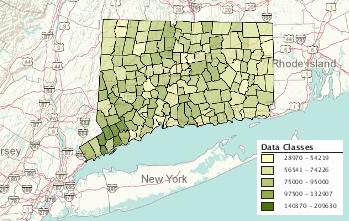Several new tools have been made available by the US Census Bureau to aid in performing research. The following have been released recently:
- Allows users to find basic demographic and economic statistics for every
 congressional district in the US. Uses latest annual statistics from the American Community Survey.
congressional district in the US. Uses latest annual statistics from the American Community Survey. - Users can sort through stats in 5 key categories. Summary level statistics cover education, finance, jobs and housing, as well as basic demographic info. Can be downloaded and shared with others.
- A selected district can be embedded on a user’s own webpage.
Tool for Assessing Statistical Capacity (TASC)
- Sponsored by the U.S. Agency for International Development (USAID).
- Measures overall capacity of a country’s national statistical office to conduct population and housing censuses or surveys.
- Tool aids them in identifying areas where improvement is needed and can help them justify the need for additional training or funding for hardware and software. It also provides an objective, quantitative assessment of areas of strength and improvement over time.
- The TASC takes roughly four days to administer, with scores calculated from answers provided by the staff of these offices. Specific areas measured by the TASC include mapping, questionnaire content and testing, sampling, field operations, data processing, data analysis and evaluation, and data dissemination.
- The Census Bureau’s International Programs Center for Technical Assistance is available to administer the TASC and provide technical support on a reimbursable basis that addresses the primary needs of the statistical office as identified by the scores. However, the TASC is available to any expert for assessing statistical capacity. The TASC toolkit can be downloaded online at
Census Bureau Interactive Language Map
- The map pinpoints the wide array of languages spoken in homes across the nation, along with a detailed report on rates of English proficiency and the growing number of speakers of other languages.
- The 2011 Language Mapper shows where people speaking specific languages other than English live, with dots representing how many people speak each of 15 different languages. For each language, the mapper shows the concentration of those who report that they speak English less than “very well,” a measure of English proficiency. The tool uses data collected through the American Community Survey from 2007 to 2011.
- The languages available in the interactive map include Spanish, French, French Creole, Italian, Portuguese, German, Russian, Polish, Persian, Chinese, Japanese, Korean, Vietnamese, Tagalog and Arabic. After selecting one of these languages from the menu, users will see a national population density map, with each dot representing about 100 people who speak the language at home placed where these speakers are concentrated. The map also allows users to zoom in to a smaller geographic area, where each dot represents 10 people. The dots were placed in a random location within census tracts to protect the confidentiality of speakers.















